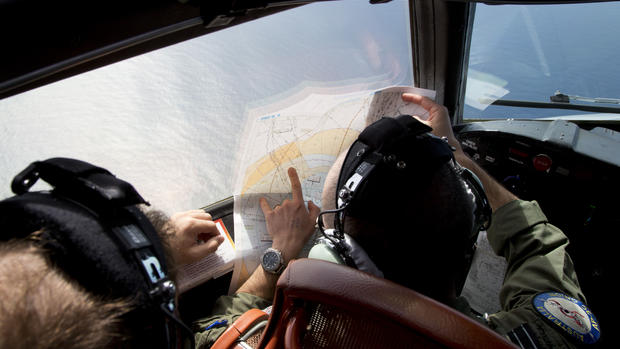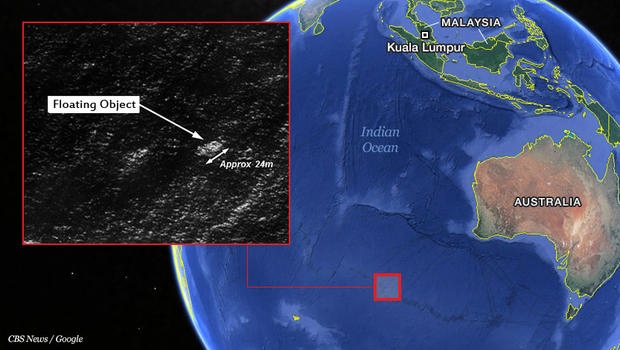Flight 370 search equipment ranges from sophisticated to simple
From satellites to binoculars, the hardware being used in the search for the missing plane far off western Australia ranges from the sophisticated to the simple.
Some of the equipment being used to look for Malaysia Airlines Flight 370:
Orion Planes
The plane most utilized so far has been the Lockheed P-3 Orion, a four-engine turboprop favored by the Australian and New Zealand defense forces. Because the search area in the southern Indian Ocean is so remote - some 1,550 miles southwest of Perth - it's an eight-hour round trip, leaving the planes just two or three hours to search.
The Orion has a crew of 13, some of whom are stationed on an observation deck to search. Yardley said they use their eyesight, as well as a state-of-the-art radar system and three cameras - one infrared, one long-range, and one high resolution. The combination of systems helps them detect almost anything that's on the surface, he said. The crew also films everything so they can review what they've seen after they return to base.
The Orion has sonar to search below sea level, although it's not being used in this search, Yardley said.
"CBS This Morning" contributor Michio Kaku, a physics professor at the City University of New York, said the area is "quite turbulent, and even a gentle current of five miles an hour could carry debris of hundreds of miles across."
The search -- now focused some 1,500 miles southwest of Perth, Australia -- is a "literal race against time," according to Kaku. "The black box has a beacon, but that beacon has a battery -- a battery with a life 30 days," he explained. "And we've already lost two weeks, so of the window of opportunity is closing very rapidly."
Binoculars
The Norwegian cargo vessel Hoegh St. Petersburg arrived in the area late Thursday and used lights to search overnight.
Another commercial ship was due to arrive later Friday and three Chinese naval ships were heading to the area. China also planned to send an icebreaker that happened to be in Perth following a voyage to Antarctica.
Any plane debris that is found will be transported back by the Australian navy ship the HMAS Success, which is due to arrive at the search site Saturday.
Buoys With GPS
The New Zealand Orion plane dropped two marker buoys Thursday, and searchers were planning to drop more buoys from a C-130 Hercules military transport plane.
The buoys resemble a poster tube, each about 1 meter (3.3 feet) long, with an antenna that transmits a GPS signal that can be tracked by searchers.
The idea is that the buoys drift in a manner similar to any debris, giving searchers clues as to where debris might move over time. The system isn't perfect - the wind can move the buoys at a different rate than larger objects - but is designed to factor in some of those variables.
Images From Space
Satellite images taken by a private company and released by the Australian government appeared to show two large objects, which prompted searchers to investigate further.
However, the images aren't definitive. They came from a DigitalGlobe satellite that can look left or right, but which gets lower quality images the father to the side it looks.
The satellites aren't like the all-powerful ones in the movies that can, say, read a license plate from space. The images appear to be little more than smudges to the untrained eye, and need experts to interpret them. One thing experts look for are reflections, which can help indicate whether a smudge is an object or just water movement.
Australian authorities have redirected other commercial satellites to the area to take higher resolution images, which may provide more answers.


